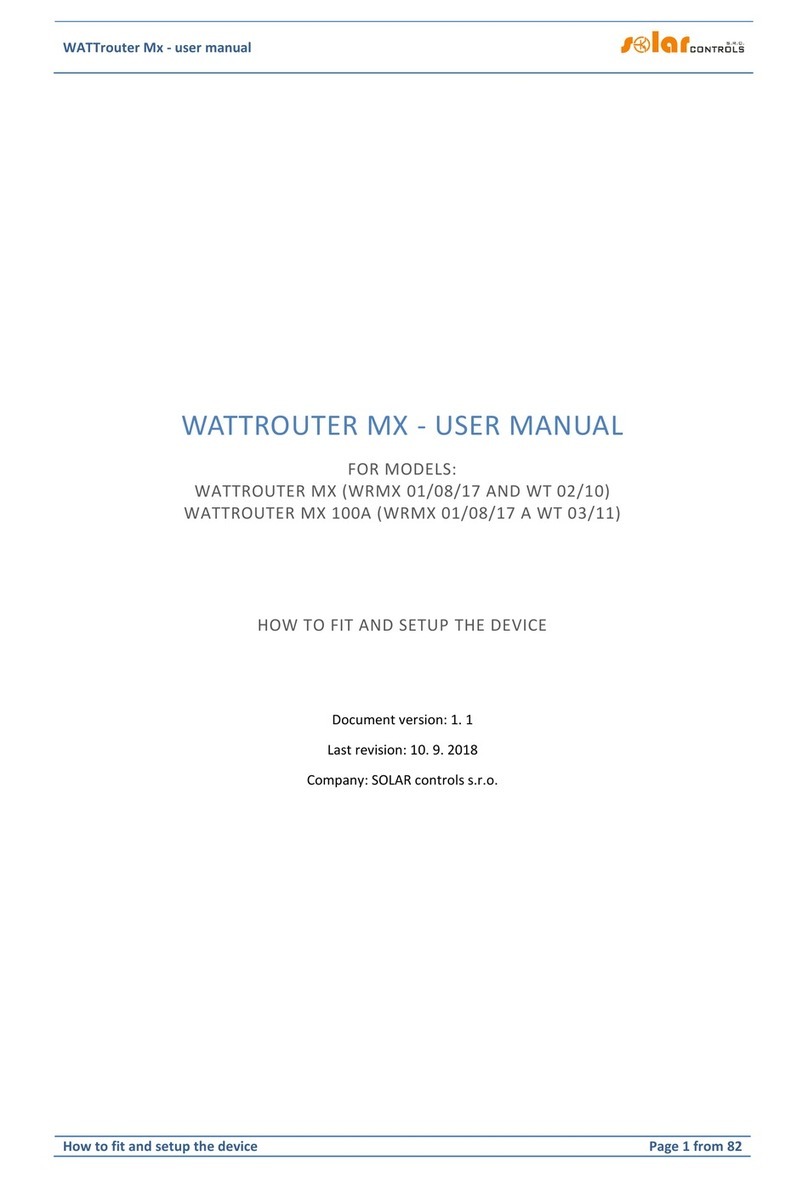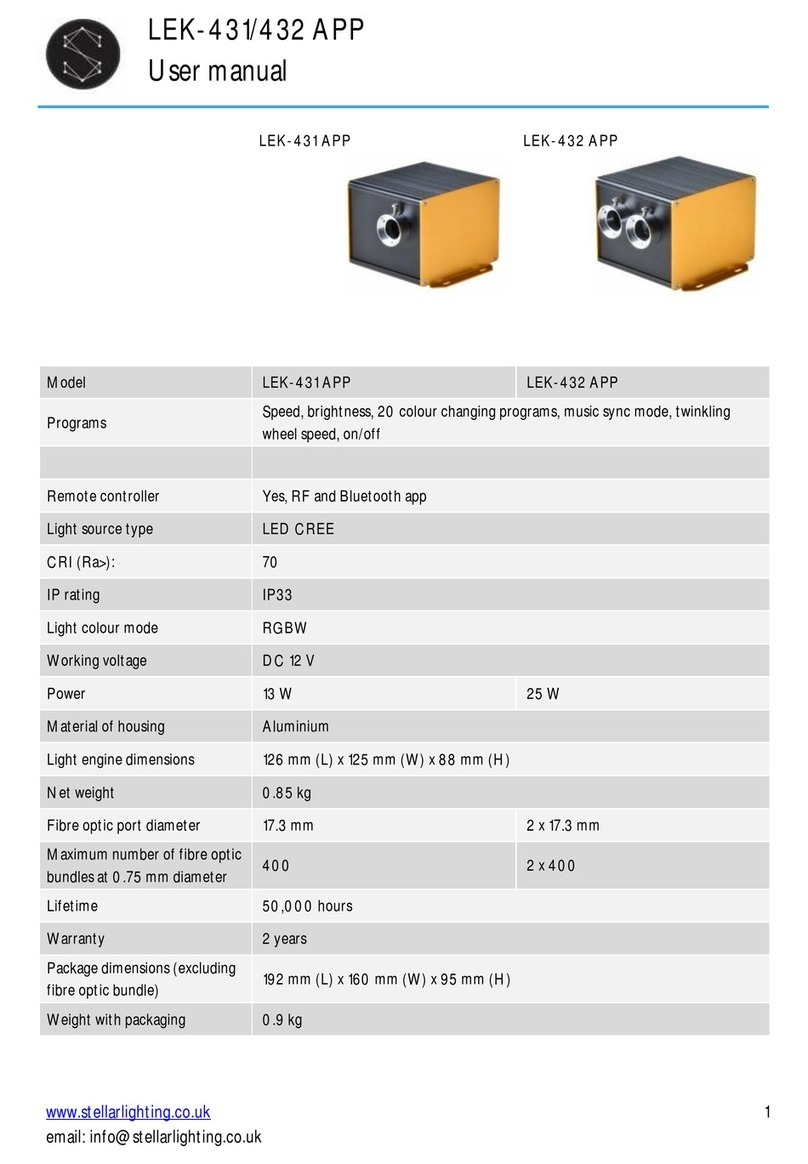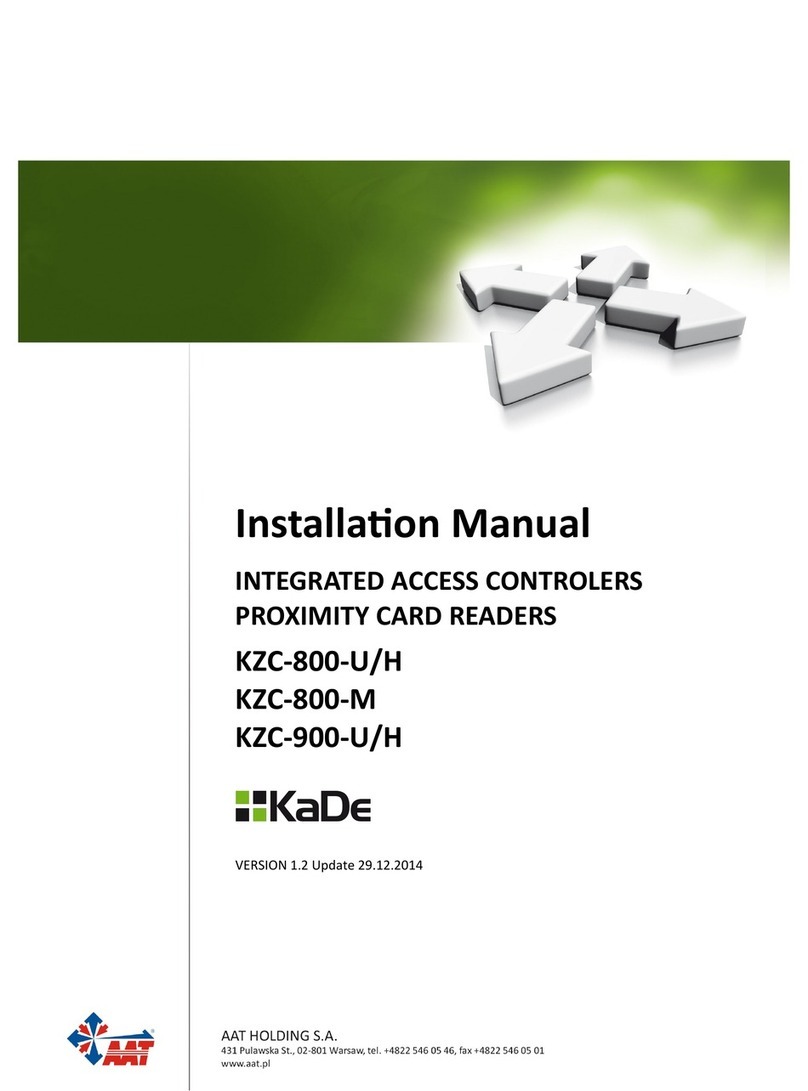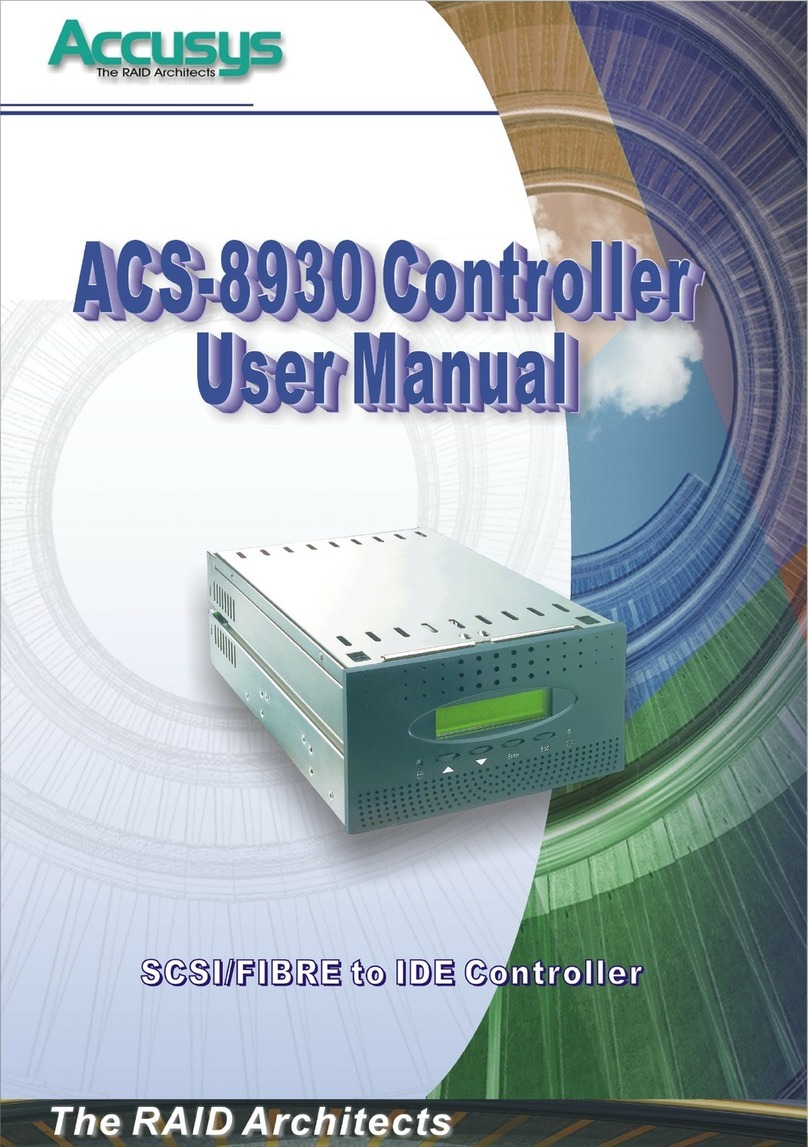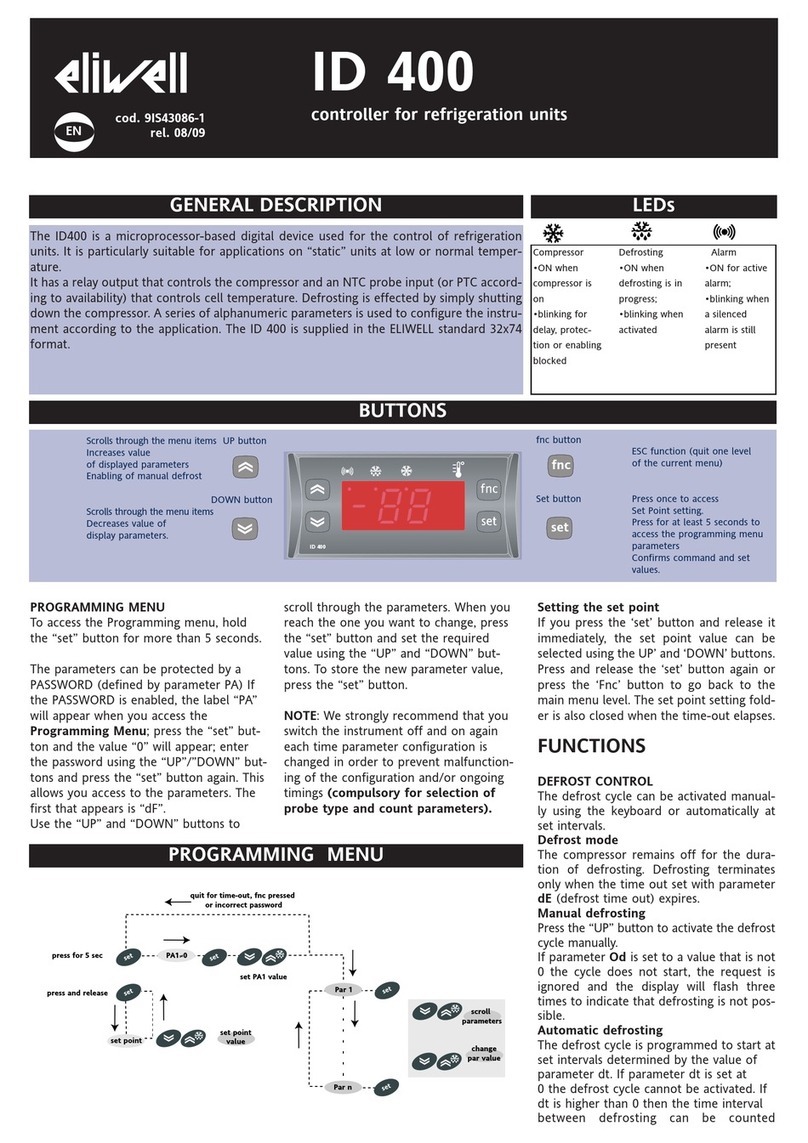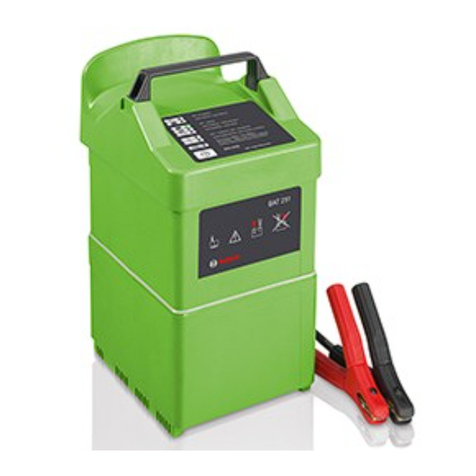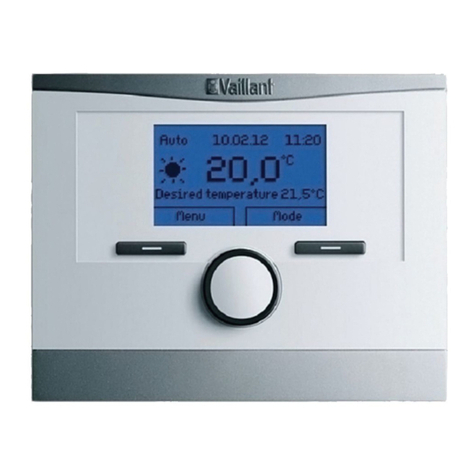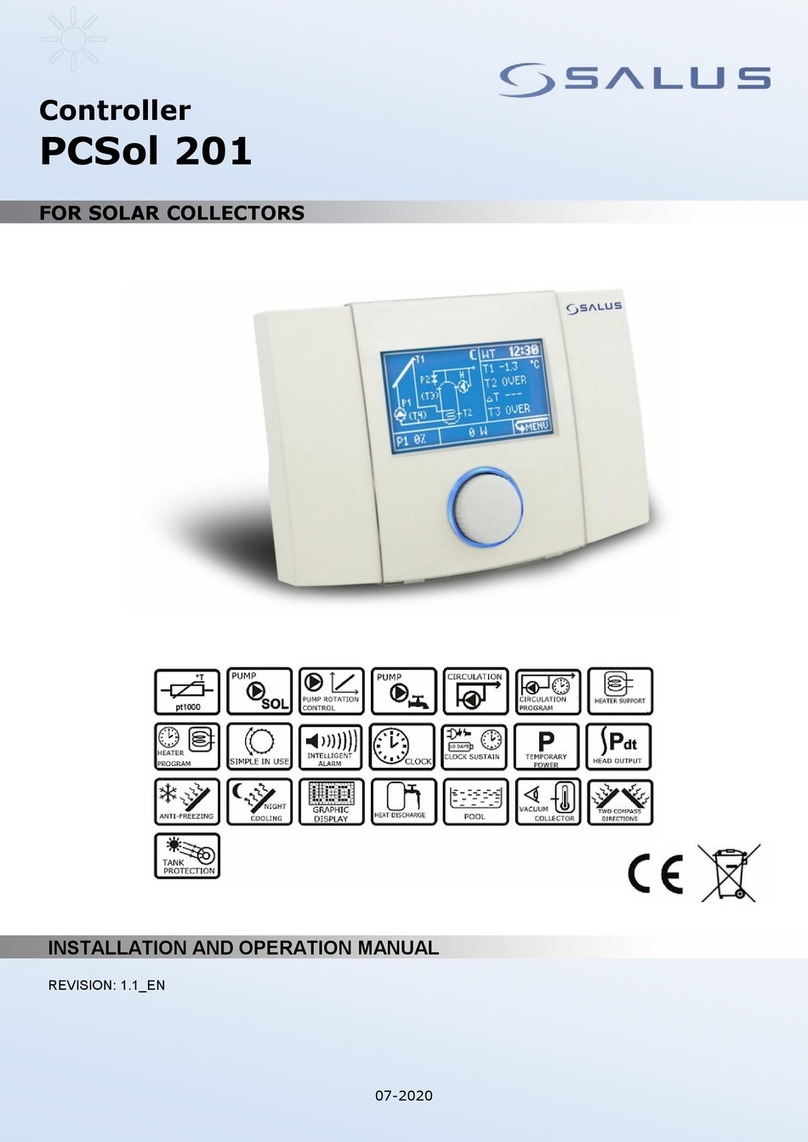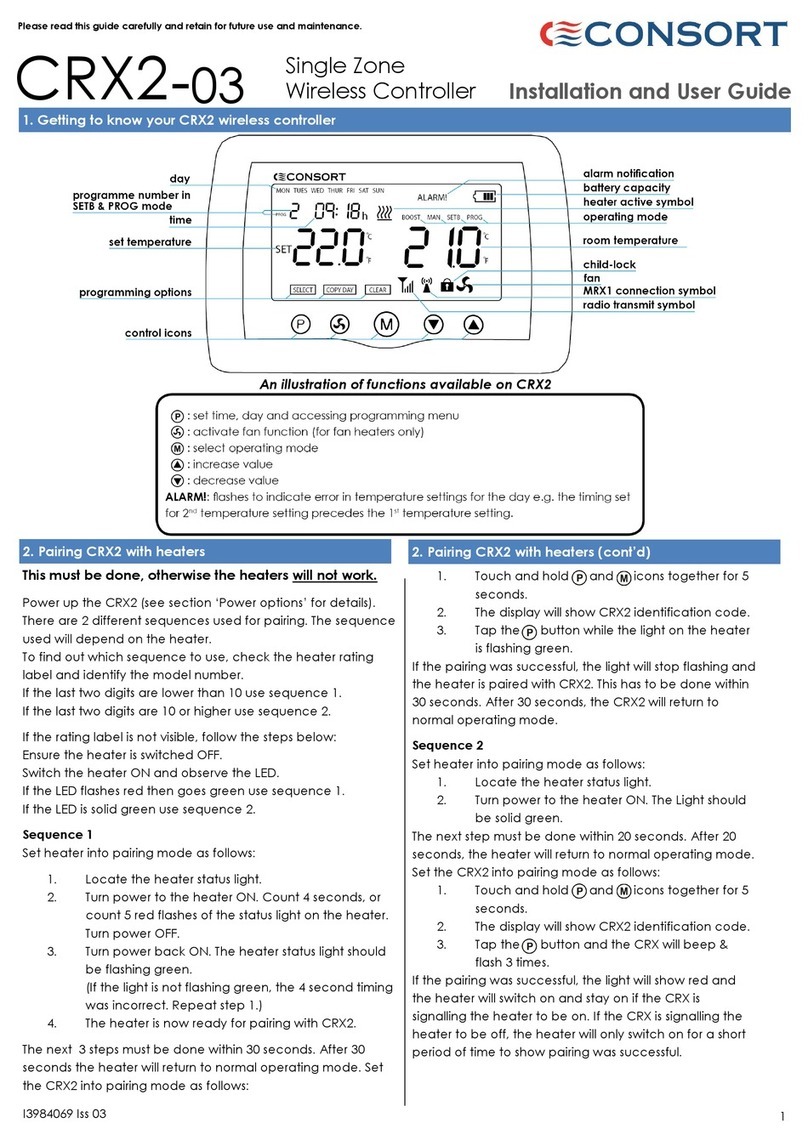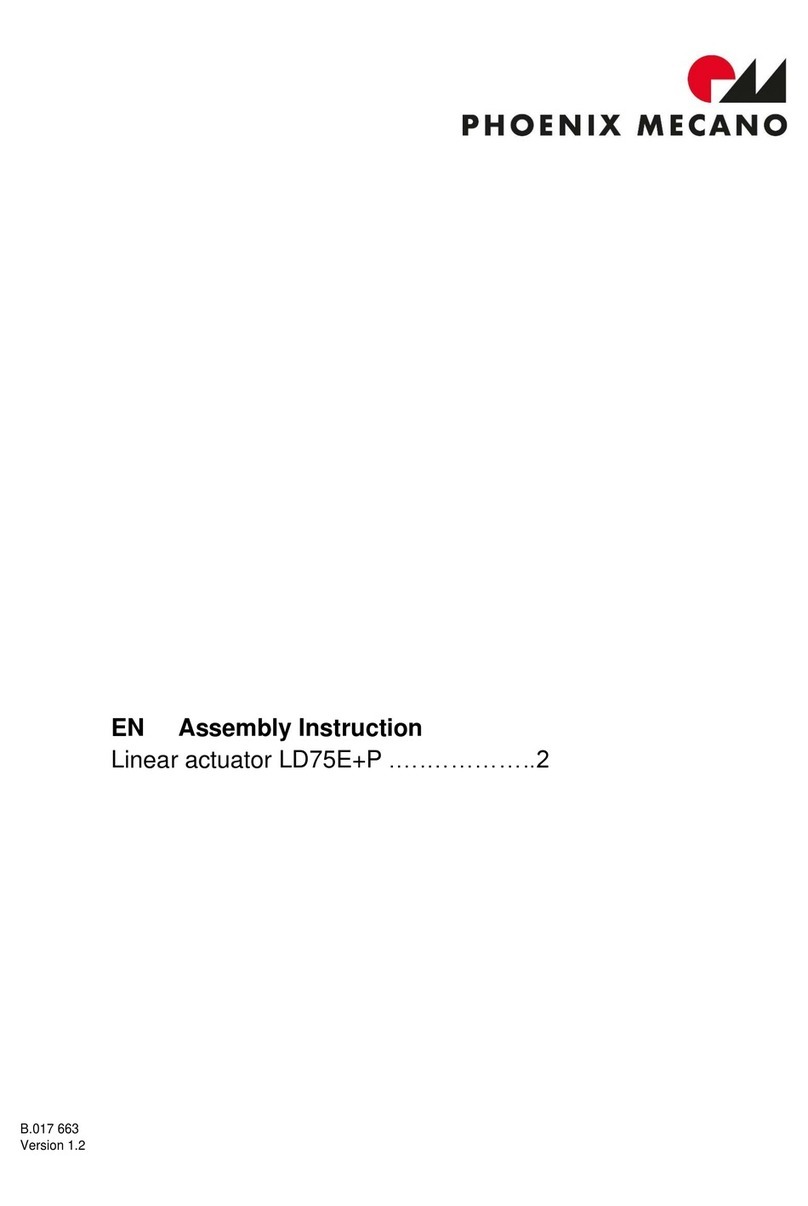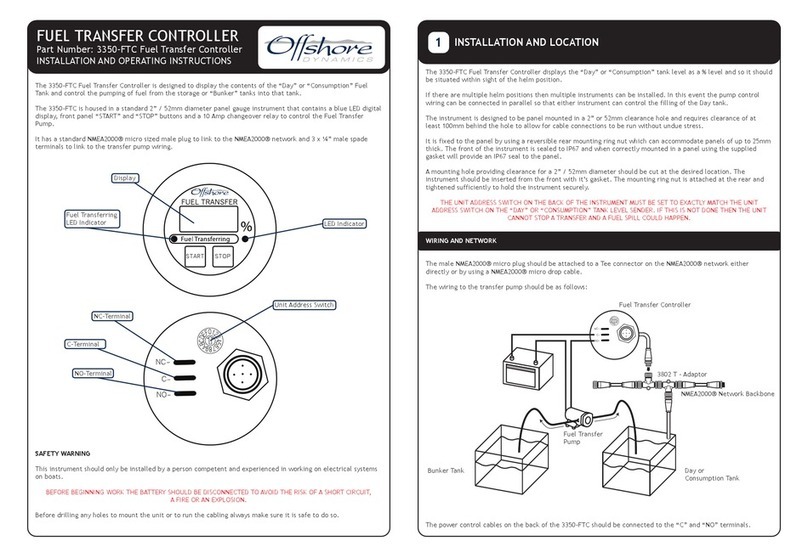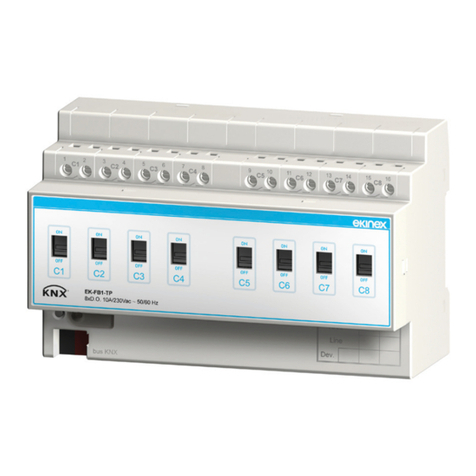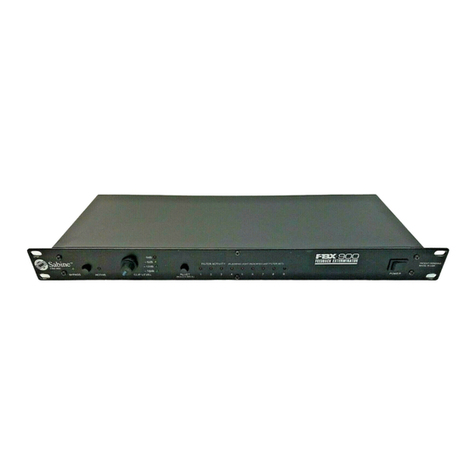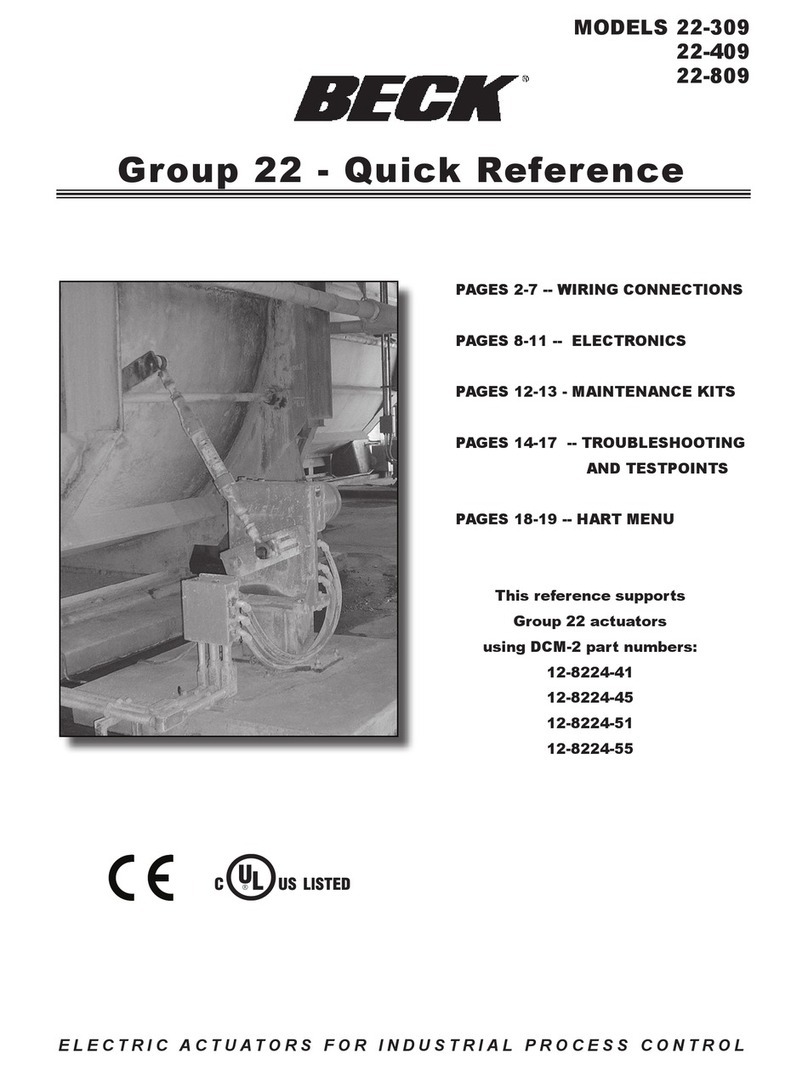SOLAR controls WATTrouter ECO User manual

WATTrouter ECO - user manual
www.solarcontrols.cz
How to fit and setup the device
Page 1 from 66
WATTROUTER ECO - USER MANUAL
FOR MODELS:
WATTROUTER ECO (WRE 01/06/14 AND WT 02/10)
HOW TO FIT AND SETUP THE DEVICE
Document version: 1.4
Last revision: 20. 3. 2000
Company: SOLAR controls s.r.o.

WATTrouter ECO - user manual
www.solarcontrols.cz
How to fit and setup the device
Page 2 from 66
TABLE OF CONTENTS
General information................................................................................................................................................ 4
Description of basic function .................................................................................................................................. 5
Packaging contents ................................................................................................................................................. 7
Safety warning ........................................................................................................................................................ 8
Fitting the device..................................................................................................................................................... 9
Inserting the SC-Gateway module .................................................................................................................... 19
Inserting the SC-Router module........................................................................................................................ 20
Device configuration ............................................................................................................................................. 21
USB driver installation....................................................................................................................................... 21
WATTconfig ECO control software installation ................................................................................................. 23
Setting up main function................................................................................................................................... 23
Setting up CombiWATT mode ........................................................................................................................... 26
Setting up time schedules ................................................................................................................................. 27
FB input configuration....................................................................................................................................... 28
Wireless comunication settings ........................................................................................................................ 28
Finishing the configuration ............................................................................................................................... 29
Description of WATTconfig ECO items .................................................................................................................. 30
Main window .................................................................................................................................................... 30
Measured parameters and statuses ............................................................................................................. 31
Input settings tab .......................................................................................................................................... 33
Output settings tab ....................................................................................................................................... 35
Time schedules tab ....................................................................................................................................... 39
Other settings tab ......................................................................................................................................... 41
Statistics tab .................................................................................................................................................. 44
Log tab........................................................................................................................................................... 46
Options and buttons ..................................................................................................................................... 46
USB/COM driver configuration window............................................................................................................ 47
Buy additional features window ....................................................................................................................... 48
LED statuses .......................................................................................................................................................... 49
Configuration examples ........................................................................................................................................ 50
Example No. 1 –one load only.......................................................................................................................... 50
Example No. 2 –all 6 loads, control mode - sum of all phases ......................................................................... 52
Example No. 3 –all 6 loads, control mode - each phase independently .......................................................... 54

WATTrouter ECO - user manual
www.solarcontrols.cz
How to fit and setup the device
Page 3 from 66
Example No. 4 –5 loads, control mode - each phase independently ............................................................... 56
Troubleshooting .................................................................................................................................................... 58
Maintenance and repairs ...................................................................................................................................... 63
Technical specifications......................................................................................................................................... 64
Recycling ............................................................................................................................................................... 65
Declaration of conformity ..................................................................................................................................... 66

WATTrouter ECO - user manual
www.solarcontrols.cz
How to fit and setup the device
Page 4 from 66
GENERAL INFORMATION
WATTrouter ECO is a programmable controller to optimize self-consumption of energy produced by
photovoltaic or wind power plant (hereinafter referred to as PV-plant). It is a smart home energy management
system. After correct installation and configuration, the controller perfectly optimizes self-consumption of
energy produced by your PV-plant. WATTrouter ECO consists of a current sensing module and the regulator
itself.
WATTrouter ECO offers the following functionalities:
Three-phase indirect current measurement.
One phase detection of voltage necessary to determine the power direction on L1 and SW detection
to determinate the current direction on L2 and L3.
Evaluation of active power outputs in individual phases, necessary to determine the surplus of
produced electric power.
Regulation based on the sum of power outputs (summary surplus) from all three phases or based on
surplus in each phase.
Switching up to 6 outputs (2 relays and 4 external solid state relays SSR) based on configured
priorities.
Switching up to 6 wireless outputs based on configured priorities (only with SC-Gateway module).
Optimal use of surplus energy produced by PV-plant on SSR outputs through the application of
proportional synchronous regulation of resistive loads, compliant to European standards EN 61000-3-2
and EN 61000-3-3. This regulation modulates connected load's power exactly according to the
available surplus energy.
Very short average dynamic response of the controller (up to 10 s)
Optional CombiWATT program used for switching loads under a combined mode where energy is
taken both from PV-plant and public grid (especially suitable for water heating and also for swimming
pool filtering system).
Input for low tariff signal (night/low tariff) for CombiWATT. This is for households where double tariff
rates will apply.
1 input for connection of impulse output of external energy meter, which may measure any power
output. Measured value is displayed in WATTconfig ECO application.
Separated current sensing module and regulator for easy installation into existing household wiring.
WATTconfig ECO software designed for MS Windows, Linux and MAC OS X provides comfortable
controller configuration and monitoring via USB interface.
Real-time module backed up with a lithium battery for advanced management of outputs and
CombiWATT function.
Time schedules for outputs.
Day, week, month and year statistics (only with activated SW feature).
PWM mode for outputs allowing for proportional control of suitable heat pumps, air conditioners or
battery chargers (only with activated SW feature).
Firmware updates.

WATTrouter ECO - user manual
www.solarcontrols.cz
How to fit and setup the device
Page 5 from 66
DESCRIPTION OF BASIC FUNCTION
If the device is equipped with the SC-Router wireless module, the device operates only as a receiver
and switches outputs according to the master system requirements. For more information, see
chapter Inserting the SC-Router module.
The current sensing module measures electric current in real time and on all phases. The regulator evaluates
the measured electric currents and if it determines the available surplus energy produced by the PV-plant, it
will switch on connected loads according to adjustable priorities, while constantly trying to maintain zero
energy flow through the current sensing module, the so called "virtual zero" (the sum of active power outputs
on all three phases = 0) or optionally, on each phase separately, so called "phase zero".
Switching according to priorities is done in the following way:
By default (during night), all loads are turned off. If surplus energy generated by PV-plant is determined in the
morning, the output with the first (highest) priority is switched on.
The switching time is different according to selected output function.
SSR/PWM outputs (proportional outputs) are switched on almost immediately after surplus energy is
detected and the controller gradually (synchronous control or PWM modulation) maintains "virtual
zero" or "phase zero", according to the control settings.
Relay outputs are switched on only if the surplus energy exceeds the preset load‘s nominal power.
Alternatively, relay outputs may be operated in "prepend" mode if there is sufficient power at any
proportional output with nearest higher priority. This allows for maximum utilization of the produced
surplus power even for relay outputs - refer to the "Prepend before SSRs" function.
When load with 1st priority is fully switched on (for proportional output it means switching on the maximum
power), the system waits until the power output of PV-plant increases again (beginning of dawn). If electric
production is determined even when this load is switched on, load with second priority in the same mode is
switched on as well.
If the power output of PV-plant is still increasing, additional connected loads are switched on in the same
mode.
If the power output of the PV-plant decreases, or if another load - not connected to the WATTrouter device is
switched on, the switched (active) outputs are disconnected - again according to preset priorities but in reverse
order (the load with lower priority is disconnected first).
For relay outputs there may be set a minimum switch on time. If, simultaneously with a relay output the
proportional output with higher priority is switched on, and the available surplus energy is reduced, the
proportional output will try to reduce the power output of the load (even down to zero) in order to maintain
virtual zero or phase zero on the current sensing module, if possible.
Except for the situation specified in the paragraph above, the controller never violates the established
priorities.
The above specified principle applies only to standard connection of the current sensing module, connected
right behind the facility’s main energy meter, so the WATTrouter device uses only the actual PV-plant surpluses
(recommended settings). However, WATTrouter controller is versatile device and can be connected according
to your needs. For example you can place the current sensing module just next to the PV inverter and then you
can maintain the virtual or phase zero on that line.

WATTrouter ECO - user manual
www.solarcontrols.cz
How to fit and setup the device
Page 6 from 66
The above specified basic control mode may be combined with another mode of output switching, provided
that low tariff signal (double tariff rate) is available (CombiWATT mode), or with switching based on preset time
conditions (time schedules).
This device is not designed for precise active power measurement (it is not a replacement for a
wattmeter). Active power is measured with sufficient precision in order to maintain all control
functions.

WATTrouter ECO - user manual
www.solarcontrols.cz
How to fit and setup the device
Page 7 from 66
PACKAGING CONTENTS
Contents of packaging:
1 WATTrouter ECO regulator
1 WATTrouter ECO current sensing module
1 USB cable
1 short manual with links to this manual, software and firmware updates

WATTrouter ECO - user manual
www.solarcontrols.cz
How to fit and setup the device
Page 8 from 66
SAFETY WARNING
When you receive your package, inspect the packaging unit for damages. After opening
your package, inspect the regulator and the current sensing module for damages. Do not fit
the regulator or the current sensing module if you see signs of mechanical damages!
Always have the regulator and the current sensing module fitted by a person with the
necessary electrotechnical qualification. It is necessary that you read this manual
thoroughly and observe all safety warnings and requirements specified herein.
The regulator and the current sensing module must be fitted in a dry room without
excessive dust level. The room must be protected from direct sunlight and the ambient
temperature must be maintained within the range mentioned in chapter Technical
specifications below. Do not place the regulator or system electronic components near
flammable objects!
When power SSRs are connected to SSR outputs, it is absolutely necessary to fit these into a
distribution box equipped with adequate heat dissipation system (with ventilation grid or
vents)!
Make sure that unauthorized persons, mainly children, cannot access the location where
the controller is fitted. There is a serious risk of electric shock!
Only connect outputs of the controller to electrical loads which have been designed for this
operation mode and for which the manufacturer does not explicitly prohibit connection via
switching element!
The manufacturer is not liable for any damages occurred due to improper fitting or
operation of the device! The owner is fully responsible for operation of the entire system.

WATTrouter ECO - user manual
www.solarcontrols.cz
How to fit and setup the device
Page 9 from 66
FITTING THE DEVICE
WATTrouter ECO regulator may be fitted in a regular distribution board onto a 35 mm DIN rail or attached to a
wall using 2 screws with round or countersink head and with diameter up to 6 mm.
WATTrouter ECO current sensing module may be fitted in a regular distribution board onto a 35 mm DIN rail.
If CYKY or other thick and hard cables cannot pass through current transformers easily, use flexible cables to
extend the existing connections. When fitting the current sensing module do not press hard on it. You may
damage the module.
Tip: Individual phase wires may pass through the current sensing module from either direction. The direction of
currents may be configured in the control software.
To connect power supply to the regulator (L and N) use wires with a minimum cross-section of 0.5 mm2, for
example CYKY 1.5.
To connect loads to the relay outputs use wires with adequate cross-section corresponding with the power
ratings of the connected loads.
To connect loads to the power SSRs again use wires with adequate cross-section corresponding with the power
ratings of the connected loads.
To interconnect the current sensing module and regulator (inputs GND and ILx) use 4-wire cable with cross-
section from 0.5 to 1.5 mm2. If these wires are longer than 2m or are placed in a cable tray together with other
power cables/wires, we recommend using a shielded cable.
To interconnect power SSR control inputs and/or 0-10VDC control signals with SSR outputs use wires with
cross-section from 0.5 to 1.5 mm2. If these wires are longer than 2m or are placed in a cable tray together with
other power cables/wires, we recommend using a shielded cable.
To interconnect S0 impulse signals from external energy meters with FB input use 2-wire cable with cross-
section from 0.5 to 1.5 mm2, connected between S+ and FB terminals. If these wires are longer than 2m or are
placed in a cable tray together with other power cables/wires, we recommend using a shielded cable.
Connect shielding of all shielded cables to the GND terminal as close as possible to the regulator.
Figure 1: Connector and LED description (top view).
Regulator terminals - description:
L –regulator power supply and voltage detection L1, 230VAC/50Hz (must always be connected)
N –neutral wire (must always be connected)
R1_1 –relay output 1 –terminal 1
R1_2 –relay output 1 –terminal 2
R2_1 –relay output 2 –terminal 1

WATTrouter ECO - user manual
www.solarcontrols.cz
How to fit and setup the device
Page 10 from 66
R2_2 –relay output 2 –terminal 2
FB –input for connection of impulse output of external energy meter (0V or +5V)
S4- –external output for SSR 4 –negative electrode (open collector)
GND –common wire coming from the current sensing module (must always be connected)
I_L1 –electric current measuring input L1 from the current sensing module (must always be
connected)
I_L2 –electric current measuring input L2 from the current sensing module
I_L3 –electric current measuring input L3 from the current sensing module
LT –low tariff signal detection (0V or +5V)
S+ –external output for SSR –common positive electrode (+5V)
S1- –external output for SSR 1 –negative electrode (open collector)
S2- –external output for SSR 2 –negative electrode (open collector)
S3- –external output for SSR 3 –negative electrode (open collector)
USB –USB interface connector (USB B)
LED description:
PWR –regulator power on light (green)
COM –communication light - USB interface (yellow)
ERR –error status light (red)
S1 –external output for SSR 1 - activity indication light
S2 –external output for SSR 2 - activity indication light
S3 –external output for SSR 3 - activity indication light
S4 –external output for SSR 4 - activity indication light
R1 –relay output No. 1 - activity indication light
R2 –relay output No. 2 - activity indication light
Wireless PWR –LED indicator of SC-Gateway (optional accessories)
Wireless LINK –LED indicator of SC-Gateway (optional accessories)
Figure 2: Terminals description of sensing module (top view).
Current sensing module terminal description:
I_L1 –current measuring output L1 (must be always connected)
I_L2 –current measuring output L2
I_L3 –current measuring output L3
GND –common wire (must always be connected)
Connect the controller according to sample connection diagrams shown lower on figures. If you observe basic
principles, connections may be combined in various ways. You may connect any number of loads to any
outputs. In certain cases you may remove certain phase cable from the measuring, etc.

WATTrouter ECO - user manual
www.solarcontrols.cz
How to fit and setup the device
Page 11 from 66
If CYKY or other thick and hard cables cannot pass through current transformers easily, use flexible cables to
extend the existing connections. When fitting the current sensing module do not press hard on it. You may
damage the module.
Tip: Individual phase wires may pass through the current sensing module from either direction. The direction of
currents may be configured in the control software.
Figure 3: Three-phase connection with low tariff signal circuit for CombiWATT mode. Current sensing module is placed at the facility’s
supply cable coming from the distribution box where main energy meter is located. The connected loads use only real surpluses
produced by PV-plant. All 6 loads are connected, 4 of them through the recommended SSRs RGC(S)1A manufactured by Carlo Gavazzi.

WATTrouter ECO - user manual
www.solarcontrols.cz
How to fit and setup the device
Page 12 from 66
Figure 4: Three-phase connection with low tariff signal circuit for CombiWATT mode. Current sensing module is placed at the facility’s
supply cable coming from the distribution box where main energy meter is located. The connected loads use only real surpluses
produced by PV-plant. This connection is one of the easiest –only one load (typically boiler or immersion heater) through the
recommended SSR RGC(S)1A manufactured by Carlo Gavazzi.

WATTrouter ECO - user manual
www.solarcontrols.cz
How to fit and setup the device
Page 13 from 66
Figure 5: Three-phase connection with 2 current sensing modules and with low tariff signal circuit for CombiWATT mode. Here are
connected all 6 loads, where 4 loads are over SSR through the recommended SSRs RGC(S)1A manufactured by Carlo Gavazzi. This
connection is necessary if the PV-plant output is connected directly to a sealed distribution box, accessible only to the electricity
provider. This may be the case for PV-plants made originally only for feed-in tariff, without self-consumption possibility. Current sensing
module 1 is connected to the household wiring branch; current sensing module 2 is connected to PV-plant branch. The accuracy of
measurement is reduced down to ± 10% in this connection because of the finite impedance of current transformer secondary winding.
Caution: Current flow through current sensing modules must always be subtracted in this connection (marked with arrows on the
picture). The same phase sequence must be observed in the regulator and in both current sensing modules!

WATTrouter ECO - user manual
www.solarcontrols.cz
How to fit and setup the device
Page 14 from 66
Figure 6: Three-phase connection of WATTrouter ECO with 2 regulators and without low tariff signal circuit (CombiWATT mode cannot
be used). Using this connection you may extend the number of outputs up to 12. Current sensing module is placed at the facility’s supply
cable coming from the distribution box where main energy meter is located. Connected loads use only the actual surpluses produced by
PV-plant. To make things simple, only 3 resistive (heating) loads are connected, but you may use all 12 outputs. Similarly, you may also
connect 3 regulators to 1 current sensing module. In such scenario, each regulator works on one phase and you will get 18 outputs.
Figure 7: Connection of energy meter with pulse output S0 with input FB. On picture is type EM10 manufactured by Carlo Gavazzi.
L N
I >
Regulator
I_L1
I_L2
I_L3
GND
S2-
S+
S1- R2_1
R2_2
L
N
LT R1_1
R1_2
USB
FB
S4-
S3-
EM10
Power meter with puls output

WATTrouter ECO - user manual
www.solarcontrols.cz
How to fit and setup the device
Page 15 from 66
Figure 8: Increasing of current measurement range of the device for facilities where main circuit breaker is larger than 3x40A.
Transformers 200/5A, or even 400/5A may be used, based on the main circuit breaker value. Secondary coil of current transformers is
shorted through the current sensing module (the secondary circuit passes through measuring transformers in the current sensing
module). Additional increase of current measurement range may be done if you take the secondary circuit of the current transformer
and make several turns through the measuring transformer in the current sensing module (for transformers 200/5A, the best option is
to make 4 turns in order to reach optimum transfer ratio 200/20A). For this purpose we recommend using lines, which are not overrated
for the nominal secondary current, just to be able to make more turns through the hole of measuring transformer. When WATTrouter
connected through external current transformers, the conversion ratio must be set correctly in the control software - see the item
Conversion ratio of external CT‘s in the main window of the WATTconfig ECO software.
Figure 4: Connection of external devices controlled with a voltage of 0-5 VDC. The SSR output has to be operated in PWM mode. PWM
signal is presented on terminal S1-(for output S2 on terminal S2- etc.). The filter element (R2 and C1) produces DC voltage with typical
residual ripple about 300 mV. If you need inverted signal then connect the filter element between the S1- and GND terminals. The
resistor R1 must always be connected between the S+ and Sx- terminals because the Sx- terminals have only open collector drive with a
very weak internal pull-up resistor. The connected device must have a corresponding control input with sufficiently high input
L N
I >
Regulator
R1
10K
R2
47K C1
330n
+
-
0-5 VDC
to measuring module
I_L1
I_L2
I_L3
GND
S2-
S+
S1- R2_1
R2_2
L
N
LT R1_1
R1_2
USB
FB
S4-
S3-

WATTrouter ECO - user manual
www.solarcontrols.cz
How to fit and setup the device
Page 16 from 66
impedance (which should not be below 200 kΩ); otherwise active filter could be necessary. Active filter must be always used, when the
external device awaits another voltage (e.g. 0-10 VDC) or current loop (4-20 mA).
Figure 10: Connection of air conditioner or heat pump unit in mode of continuous regulation based on surplus energy. Here is listed
example of outdoor unit Fujitsu controlled by module UTI-INV-G. Because this device is controlled by 0-10V, it is necessary to use a
converter of PWM to 0-10V signal. For more about connection of heat pumps, see web pages of the manufacturer.
The controller may be connected only to 230VAC, 50 Hz public electric grids. Regulator must be
protected with a circuit breaker - recommended rating is B6A - and connected loads must also be
adequately protected! Installation may only be done when the facility’s main circuit breaker is
turned off!
Upon completion of the installation process make sure to check thoroughly the connection of the
regulator and the current sensing module. Also check connection of terminals GND, I_L1, I_L2,
I_L3, LT, S+, S1-, S2-, S3-, that means all terminals located at the lower section of the regulator.
NO power grid voltage or voltage outside of tolerances specified in the chapter Technical
specifications may be connected to these terminals! Same has to be applied for terminals FB and
S4- located in right top corner of controller. NO other than resistive (heating) loads may be
connected to SSR outputs! Regular relays CANNOT be connected to SSR outputs! It is prohibited
to connect loads with higher than the maximum allowed nominal power! If you fail to observe
this rule it is almost guaranteed that you will damage the regulator and lose your warranty!
For the correct operation of the controller, it is absolutely necessary to ensure proper phasing of
the measured currents with the internal voltage detector. This can be done by selecting the
appropriate phase in the Input Settings tab. It is strongly recommended to connect the controller
so that the phase conductor fed to terminal L1 corresponds to the phase conductor wired
through the measuring transformer corresponding to the IL1 input, which will allow the
measurement to match the default settings of the controller (and therefore the same as required
LN
I >
Convertor PWM to 0-10 V
+12V
GND
0-10V
GND
+PWM
-PWM
ON
H/C
+12V
GND
TH
GND
N
C
L
ON
ERR
DEF
ON2
UTI-INV-G
(Corp. Impromat)
One phase outdoor unit Fujitsu
PE
L
N
1 (black)
2 (white)
3 (red)
I >
PE
L
N
Regulator
I_L1
I_L2
I_L3
GND
S2-
S+
S1- R2_1
R2_2
L
N
LT R1_1
R1_2
USB
FB
S4-
S3-

WATTrouter ECO - user manual
www.solarcontrols.cz
How to fit and setup the device
Page 17 from 66
for older models). The IL2 and IL3 current inputs can be connected arbitrarily; the respective
phases for these inputs must be set up correctly in the WATTconfig control software.
We strongly advise you to protect your loads connected to the power SSRs with fuses suitable for
protection of semiconductors, rather than regular circuit breakers. Please note that SSRs
damaged by overcurrent or short-circuit most likely cannot be claimed under warranty. Make
sure that solid state relays are correctly connected, as required by their user manual.
No electronic devices (various measuring and protective elements, such as sub-meters and
residual current circuit breakers) may be installed between the SSRs and the appliance, since
they may be damaged by impulse power! Always install these devices on the line between the
fuse and the solid-state relay where constant power is available.
If your facility is located in an area with higher risk of overvoltage spikes due to atmospheric
discharge (lightning), we strongly recommend fitting a suitable overvoltage/lightning protection
between the distribution box with the main energy meter and the current sensing module!
The current sensing module supplied with the WATTrouter Mx controller is fully compatible with
the current sensing module supplied with following types: WATTrouter CWx, WATTrouter CWx
SSR, WATTrouter M SSR, WATTrouter Mx, and vice versa. The current sensing module installed
with these controllers can be used with the WATTrouter ECO controller (and vice versa).
If the regulator is constantly connected to PC via USB interface (mostly if long cable is used), we
strongly recommend using an USB isolator!
Note: It is allowed to connect only pure resistive loads to SSR outputs. These loads cannot be fitted with own
electronic control system nor with built-in motors (e.g. fans - see the note below). These loads may only have
regular mechanically controlled thermostats and indication LEDs or neon lamps. Almost any regularly produced
boilers, immersion heaters, infrared radiators, heating floor pads, motor-free dryers (infra dryer), oil heaters,
cartridge heaters in a solar tanks, etc. may be used.
Note: Each SSR output is capable of providing power to heating loads with built-in fan for longer time (such as
hair dryer, heat radiator). These loads are fitted with a built-in thermal protection, which, if synchronous SSR
control mode is used for that load, will disconnect the load for low power of SSR output (in this scenario, the
built-in fan’s power is not sufficient to cool down the heating element of the load). Therefore, consider fitting
these loads to SSR outputs carefully.
Note: Heating loads connected via residual-current circuit breaker may be connected to SSR outputs.
Note: Heating loads with nominal power up to 2.3 kW may be connected to relay outputs directly, without using
external contactor.
Pulse output from external energy meters may be connected to FB input. You may also use energy meters
whose pulse outputs are fitted with optically isolated switch or an optocoupler with open collector. These
energy meters may measure any power outputs. Measured values are displayed in the control software
WATTconfig ECO. For example, these inputs may be used to connect energy meters which measure the actual
net production of PV-plant. This net production cannot generally be determined by the current sensing
module.
Carefully examine connection of the controller and then turn off all circuit breakers and deactivate fuse
switches for SSR outputs. Then turn on the main circuit breaker and the regulator circuit breaker (L1 power
supply). The LED PWR lights up (power on indication). If the light is off, or if it does not shine permanently, or if

WATTrouter ECO - user manual
www.solarcontrols.cz
How to fit and setup the device
Page 18 from 66
the LED ERR starts to flash (error status), proceed according to instructions specified in the Troubleshooting
chapter. In default status no output is active and therefore, no load will be turned on.
Now the controller is fitted and ready for configuration.

WATTrouter ECO - user manual
www.solarcontrols.cz
How to fit and setup the device
Page 19 from 66
INSERTING THE SC-GATEWAY MODULE
Insert the module to sockets in the regulator according to the images below. Before insertion you must lift the
regulator cover with a small screwdriver or similar tool.
Make sure the regulator is turned off before inserting the module!
Keep the proper orientation of the module. Reverse orientation can damage the module!
Insert the module gently, without unusual force!
Figure 5: Insert the module to sockets on regulator mainboard,
use vertical movement as the arrow indicates.
Figure 6: Resulting position of the module inside the regulator.
After regulator power on, the blue LED on the module must indicate the module initialization sequence, refer
to chapter LED Statuses. In case that does not happen, refer to chapter Troubleshooting.

WATTrouter ECO - user manual
www.solarcontrols.cz
How to fit and setup the device
Page 20 from 66
INSERTING THE SC-ROUTER MODULE
Insert the module to the controller identically as module SC-Gateway.
When equipped with this module, firmware and WATTconfig version 1.2 and later automatically set the
controller to a remote control mode (RC module). In this mode only the outputs operate. Leave all inputs
unconnected. The outputs switch according to requirements of the master system (e.g. another WATTrouter
ECO module fitted with SC-Gateway module) using wireless communication. The control SW WATTconfig looks
then like this:
Using this interface, you can monitor the excitation percentage of individual outputs depending on the settings
in the master system.
It also supports the TEST buttons to test the functionality of local outputs and the firmware update feature.
The RC link active icon indicates an active connection to the master system.
If no connection is active, the icon disappears and the red LED is blinking, see Chapter. LED states.
After removing the module SC-Router the unit behaves classically again.
Note: Proportional control of resistive loads is 4x slower for wireless outputs than for wired outputs. The reason
is a slower response of the wireless system.
Table of contents
Other SOLAR controls Controllers manuals
